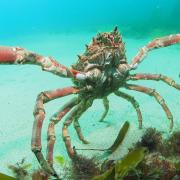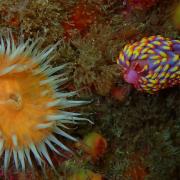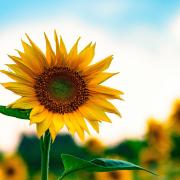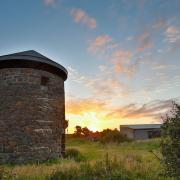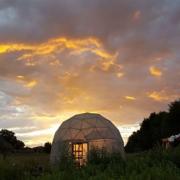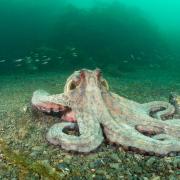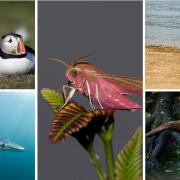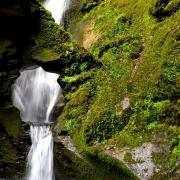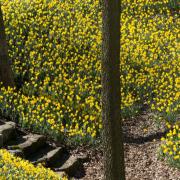Spring is an exciting time for bird watchers since, by April, summer migrants will be flocking to Cornwall.
Words and photos by David Chapman
Spring is an exciting time for bird watchers since, by April, summer migrants will be flocking to Cornwall.Words and photos by David Chapman
The floodgates for our summer migrants have opened and the commoner species are flocking in to the county. Some of these arrivals are more obvious than others. For example, the swallow is quite a visual bird and its aerial antics make it easy to spot. By the end of the month most Cornish swallows will be back on their territories, flying in and out of barns looking like they had never left in the first place! Swallows nest in Cornwall but during spring we see not only our own birds but thousands of others destined for more northerly territories.I have heard from many people in Cornwall who suggest that their swallow numbers have declined in recent years. I have experienced the same thing on our smallholding with no swallows nesting for the last two years. The RSPB suggests there might be several reasons contributing to this decline. One is the change in use of farmland; as more farms turn arable there are fewer insects for them to feed on. Another possibility is the reduced number of breeding barns as many are being converted into houses. I think weather must be playing an important role. Drier weather means it is harder for the swallows to find mud for nesting and wetter weather can make it difficult for them to hunt. Take a walk along the coast and you might notice a more subtle migration of birds. One of the earliest migrants to return is the wheatear. The vast majority of wheatears passing through Cornwall are destined for the moorlands of northern Britain but some stay to breed on Bodmin Moor and at one or two coastal locations in the county.The wheatear enjoys perching but in its chosen environment there are few perches so it can often be seen on top of rocks. While standing proudly on top of the tallest rock it will usually attract our attention with a loud ‘chack’ then flick its tail to reveal an obvious white rump, before darting off in pursuit of a fly or other unlucky insect. Its chase in pursuit of prey seems to combine flight with running in an almost imperceptible blend. One thing I love about birdwatching in Cornwall is the opportunity to see birds that are simply migrating through. Last year, for example, I saw a ring ouzel on The Lizard. Ring ouzels do not breed in Cornwall but pass through regularly every spring and autumn. They never occur in huge numbers so to find one is always a little exciting; it’s a chance to see a bird that would normally be found on high moorland with rocks and scree. At times of migration they can be found anywhere but coastal headlands offer the best chance and April is as good a month as any.At first glance ring ouzels look like blackbirds. They are the same size and shape and the basic colouration is similar. Look a little closer and you will see a white crescent on the breast. This crescent is truly white in males but creamier in females. Male ring ouzels also have a whitish tinge to some parts of their plumage, particularly on the wings, which can look silvery in the sunlight.There are some birds that regularly arrive in Cornwall by mistake. Last spring I had a phone call from a friend of mine about an unusual bird on his campsite in Mawgan. Trevor Smitheram phoned to tell me of a hoopoe on his campsite and I could drive straight in to try to photograph it. When I arrived, the hoopoe was feeding in a corner of the field and Trevor opened the gate for me to drive straight through. It posed for me to take several photos down to a distance of only about eight yards!This is a bird that isn’t easy to
forget. Some people refer to them as the butterfly bird because of the broad wings and beautiful flight. Its plumage is quite striking with a buff-coloured upper body and black and white wings, but probably the most striking feature is the crest which can be raised into a half-circle above its head. It has a long, slightly down-curved bill to probe into the ground to find worms, larvae and insects. For this reason hoopoes tend to feed on short grassy areas so a campsite is ideal for them. Hoopoes don’t intend to visit Cornwall since they overwinter in Africa and breed mostly in southern Europe, but some always fly too far when they return from Africa and a few occur in Cornwall, mostly in April, every year. They haven’t yet bred in Cornwall as far as I am aware, but I am sure that one day a pair of hoopoes will meet up, maybe on Trevor’s campsite, and settle down to raise a Cornish family!
Where to spot birds
The best places to observe migration are along the coast of the county. Head for obvious headlands early in the morning for the best chance of seeing birds passing through. Lizard Point, Land’s End, St Agnes Beacon, Rame Head and Pentire Point are all good places for a walk with migratory birds.
Further Information
The campsite at Mawgan on The Lizard is called Landare and is on Lower Lane, Mawgan, TR12 6AT. 01326 221867
For further information visit: www.campingandcaravanningclub.co.uk
To check out the latest migrant bird sightings in Cornwall visit the Cornwall Birding website, which is updated daily:www.cornwall-birding.co.uk









